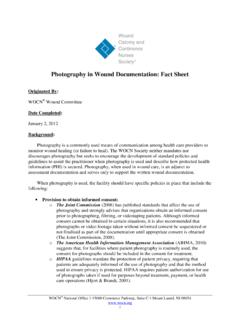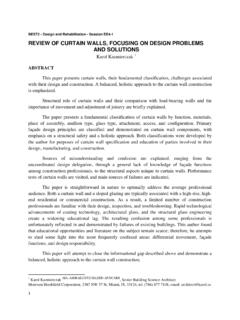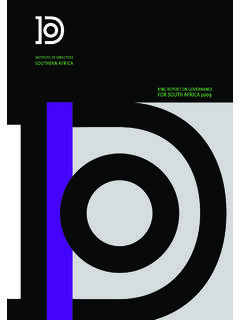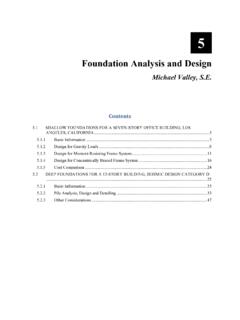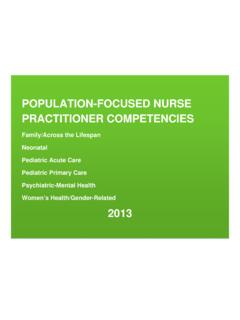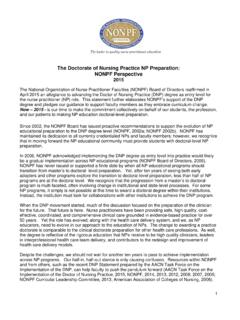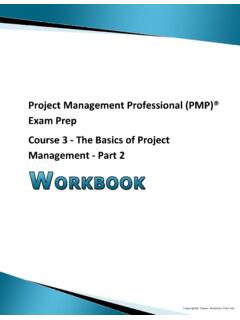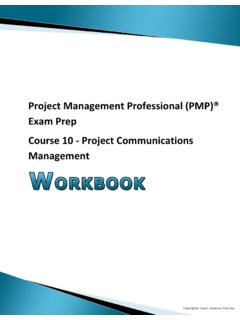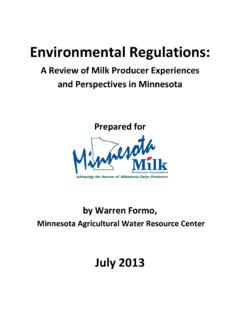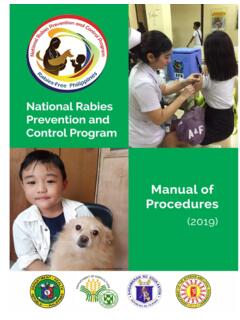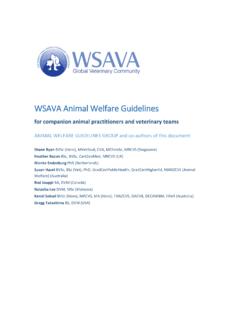Transcription of 1/17/2012
1 [Type text] Biochemistry Approved Version (March 2013) Developed by the Quality Assurance and Laboratory Standards (QALS) Committee of the ASVCP Harr KE, Flatland B, Nabity MB, Freeman KP 1/17/2012 1 ASVCP TEa Guideline (Biochemistry); Approved Version (March 2013) 2 SCOPE .. 2 3 DEFINITIONS .. 2 4 ALLOWABLE TOTAL ERROR FOR VETERINARY REFERENCE LABORATORY AND POINT OF CARE EQUIPMENT .. 5 5 QUALITY ASSESSMENT .. 8 Introduction .. 8 Quality Control Material .. 9 Frequency .. 9 Handling and Transport .. 10 6 ALLOWABLE TOTAL ERROR .. 11 Instrument performance evaluation: Calculation of CV, SD, bias, and calculated or observed Total Error (TEobs) 11 TEobs Interpretation and Assessment of External Quality Assessment 14 Total Allowable Error Specifications Based on Clinical Decision Limits.
2 14 Bias, CV and Total Allowable Error Specifications Based on Biological Variation .. 14 7 REFERENCES IN TEXT .. 15 8 WEB RESOURCES .. 16 Veterinary Information Network Resources .. 16 ASVCP Resources .. 17 Human Medical Resources .. 17 9 VETERINARY QUALITY ASSURANCE PROGRAM RESOURCES .. 17 10 METHODS VALIDATION SUBCOMMITTEE ADVISORS .. 18 11 METHODS VALIDATION SUBCOMMITTEE PATHOLOGISTS .. 19 2 ASVCP TEa Guideline (Biochemistry); Approved Version (March 2013) 1 SCOPE As all laboratory equipment ages and contains components that may degrade with time, initial and periodically scheduled external quality assessment is required to verify accurate and precise results over the life of the instrument. As veterinary patients may present to general practitioners and then to referral hospitals (both of which may perform in clinic blood work, using different instruments), and given that general practitioners may send blood work to reference laboratories, there is a need for comparability of results across instruments and methods.
3 Allowable total error (TEa) is a simple comparative quality concept used to define acceptable analytical performance. These guidelines make recommendations for determination and interpretation of TEa for commonly measured analytes in major domestic species (cats, dogs, and horses) for equipment commonly used in veterinary diagnostic medicine. TEa values recommended herein are aimed at all veterinary settings, both private in clinic laboratories using point of care analyzers and larger reference laboratories using more complex equipment. TEa can be used for (1) assessment of an individual instrument s analytical performance which is of benefit if one uses this information during instrument selection or assessment of in clinic instrument performance (2) QC validation (as illustrated in Rishniw, et al.)
4 , and (3) as a measure of agreement or comparability of results from different laboratories ( the in clinic analyzer and the reference laboratory). These guidelines define a straightforward approach to assessment of instrument analytical performance. Use of TEa for internal QC validation is not explained fully in this document. Further detail is available in the Point of Care Guidelines for Quality Assurance, Section 2 Chemistry ( as of December 2013). 2 DEFINITIONS Accuracy Closeness of agreement between the results of a measurement and the true concentration of the analyte. Accuracy is the opposite of inaccuracy, or bias. Alpha Error Probability of falsely rejecting the null hypothesis (typically defined as health in medicine) when it is true; false positive.
5 Beta Error Probability of falsely rejecting the alternative hypothesis (typically defined as disease) when it is true; false negative. Bias ( inaccuracy) is the difference between the measured result and the concentration of a known standard. Generally used to describe the inaccuracy of a method relative to a comparative method in a method comparison experiment. The term bias in difference plot analysis (expressed in analyte units) equals the difference between the mean values of the two methods being compared or the average of all the differences between the paired sample values. Bias may also be expressed as a percentage according to the formula bias(%) = meantarget meanmeasured/meantarget 100. Total systematic error includes constant and proportional bias.
6 3 ASVCP TEa Guideline (Biochemistry); Approved Version (March 2013) Bias, constant When the degree of systematic error remains the same over the range of analyte concentrations ( , results of one method are consistently above or below another method). Bias, proportional When the magnitude of systematic error changes as the analyte concentration changes. Calibration The process of testing and adjusting how a laboratory instrument or test system measures a substance by comparing it to a known substance (the calibrator) and subsequently defining the association between the instrument/test system and the value of the calibrator. Calibrator A sample intended by its manufacturer to be used to define the association of a laboratory instrument measurement to a known value.
7 (See calibration.) Coefficient of Variation (CV) A measurement of imprecision (random error), biologic variation, or other variability in a population; mathematically, CV is standard deviation divided by the mean and expressed as a percentage. Commutability is the equivalence of results of different measurement procedures using a reference material and representative samples from healthy and diseased individuals. Comparability Testing Comparison of test results from two or more instruments within the same laboratory or from laboratories at different sites that process samples from the same patients to ensure that measurements are similar and can be used interchangeably without causing clinical error. Total allowable error is one tool that is used in comparability testing.
8 External Quality Assessment ( External Quality Assurance, EQA, or Proficiency Testing) A program which determines total testing performance by comparing a laboratory or clinic s test result (including interpretation of results) to a known standard or to an appropriate peer group mean generated from an inter laboratory comparison in which multiple laboratories measure the same sample using the same test methods, reagents and controls.[CLSI GP27 A2, ] NOTE: The primary objective of EQA or PT is to evaluate the laboratory s proficiency to measure a particular analyte. Imprecision ( random error or random variation) Lack of repeatability or reproducibility of the same result; represented by the standard deviation (in units of the test) or coefficient of variation (in units of percent).
9 Instrument performance study A study performed to characterize an instrument s analytical performance, represented by bias (inaccuracy) and imprecision (random error). Data from an instrument performance study can be used to calculate an instrument s observed total error (see total error). 4 ASVCP TEa Guideline (Biochemistry); Approved Version (March 2013) Mean Average of values measured. Precision Closeness of agreement between independent, repeated results obtained from the same sample under specific conditions. These may be derived in the same day (intraday) or on different days (between or interday). Quality Assurance ( quality assessment, QA) Procedures which monitor and improve laboratory performance. QA includes quality planning, implementation, monitoring, and assessment.
10 QA includes many common sense procedures (personnel training, use of standard operating procedures, etc.) routinely performed in well run laboratories and clinics to minimize pre analytical, analytical, and post analytical error. Quality Control (QC) Procedures which monitor analytical performance of instruments and detect analytical error. QC typically refers to use of quality control materials and analysis of resulting control data. Control data analysis may include graphs (control charts, such as Levy Jennings charts) and use of statistical rules (control rules, or Westgard rules) to determine whether control data are acceptable (in control) or unacceptable (out of control). QC validation is the process of choosing controls rules based on known analytical performance and a desired quality requirement.
